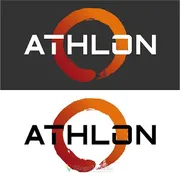AMD Athlon 3000G

AMD Athlon 3000G: Budget Processor for Basic Tasks in 2025
Overview of Capabilities, Compatibility, and Practical Applications
Key Specifications: Architecture and Performance
Code Name and Process Technology
The AMD Athlon 3000G, released in 2019, is based on the Zen (1st generation) microarchitecture and manufactured using a 14nm process technology. Despite its age, it remains popular in the budget segment in 2025 due to its low power consumption (TDP 35W) and integrated Radeon Vega 3 graphics. The code name Picasso indicates its belonging to the APU (Accelerated Processing Unit) line, designed for multimedia tasks.
Cores, Threads, and Cache
- 2 Cores / 4 Threads: Thanks to SMT (Simultaneous Multithreading) technology, the processor can handle up to 4 tasks simultaneously.
- Cache Memory: 4MB L3 cache, which is sufficient for simple applications, but may be limited for heavy workloads.
- Base Frequency: 3.5 GHz, without Turbo Boost support.
Integrated Graphics
The Radeon Vega 3 features 3 compute units (192 shader processors) and a frequency of up to 1100 MHz. This is enough for 4K video playback, light gaming (such as Minecraft or Dota 2 at low settings), and office applications.
Performance in Benchmarks
- Geekbench 6: 956 (single-core), 1970 (multi-core). For comparison, modern Ryzen 3 processors of 2025 show 1500+ in single-core tests.
- Cinebench R23: 1800 points (multi-core).
Key Features
- Low price ($50-60 in 2025).
- Support for Precision Boost technology for stable operation.
- Unlocked multiplier (overclocking possible on some motherboards).
Compatible Motherboards: Sockets and Chipsets
AM4 Socket
The Athlon 3000G uses the AM4 socket, compatible with motherboards based on the following chipsets:
- A320: Budget option without overclocking (e.g. ASUS Prime A320M-K, ~$60).
- B450/B550: Support for PCIe 4.0 (in B550), CPU and memory overclocking (MSI B450 Tomahawk Max, ~$90).
- X470/X570: For enthusiasts, excessive for this processor.
Selection Features
- BIOS Update: Boards released before 2019 may require a firmware update.
- Form Factor: Micro-ATX models (like Gigabyte GA-A320M-S2H) are suitable for compact builds.
- Ports: Check for HDMI/DVI ports to connect a monitor via integrated graphics.
Supported Memory: DDR4 and Optimization
Types and Frequencies
The processor works with DDR4 memory in dual-channel mode. Supported frequencies:
- Officially: up to 2666 MHz.
- With overclocking: up to 3200 MHz (depends on the motherboard).
Recommendations
- Use two modules (e.g., 2x4 GB) to enable dual-channel mode — this will improve Vega 3 graphics performance by 15-20%.
- Optimal capacity: 8-16 GB. For Windows 11 and basic tasks, 8 GB will suffice.
Power Supplies: Calculation and Recommendations
Power Consumption
With a TDP of 35W, even under load, a system with an Athlon 3000G rarely consumes more than 80-100W (including the motherboard, SSD, and memory).
Power Supply Selection
- Minimum Power: 300W (e.g., EVGA 300 BR, ~$40).
- With Upgrade Margin: 450-500W (Corsair CX450, ~$60).
Tips
- Don’t skimp on the power supply — low-quality models can damage components.
- Compact power supplies are suitable for passive cooling in Mini-ITX cases.
Pros and Cons of the Athlon 3000G
Advantages
- Price: One of the most affordable processors with integrated graphics.
- Energy Efficiency: Ideal for HTPC or office PCs running all day.
- Ease of Assembly: Doesn’t require powerful cooling (a stock cooler is sufficient).
Disadvantages
- 2 Cores: Multitasking is limited — launching a browser with 20 tabs and background applications may cause stuttering.
- Outdated Architecture: Lags behind modern Celeron and Pentium Gold in single-core performance.
- Limited Upgrade Path: On AM4 socket, it's better to consider Ryzen 3/5 right away.
Usage Scenarios: What This Processor is Suitable For
Office Tasks
- Working with documents, video conferencing, browsing.
- Example: A build based on Athlon 3000G, 8 GB DDR4, and 256 GB SSD can handle Microsoft Office and 10+ Chrome tabs.
Multimedia
- Watching 4K videos (via HDMI 2.0), streaming Netflix.
- Connecting to a TV as an HTPC.
Light Gaming
- CS:GO: 40-50 FPS on low settings (720p).
- GTA V: 25-30 FPS (720p, minimum settings).
Comparison with Competitors
Intel Pentium Gold G6405 (2025 price: ~$70)
- Pros: Better single-core performance (Geekbench 6 ~1100), supports DDR4-2666.
- Cons: Integrated UHD 610 graphics is weaker than Vega 3, higher price.
AMD Ryzen 3 3200G (price: ~$80)
- Pros: 4 cores/4 threads, Vega 8 (twice as powerful), overclocking potential.
- Cons: TDP 65W, requires a more expensive cooler.
Practical Building Tips
1. SSD is Mandatory: An HDD will bottleneck even this processor.
2. Dual-channel Memory: 2x4 GB DDR4-2666 will boost performance in games.
3. Ventilated Case: Even a 35W processor heats up in enclosed cases.
4. Upgrades: Choose a motherboard with PCIe 4.0 (B550) for future Ryzen 5 installations.
Final Conclusion: Who Is the Athlon 3000G Suitable For?
This processor is an option for those who need:
- A budget PC for office or study (up to $300 for the entire build).
- A media center for connecting to a TV.
- A backup system or a computer for elderly users.
Why in 2025? Despite its age, the Athlon 3000G remains a cost-effective option due to its low price and minimal cooling requirements. However, for gaming or graphics work, it is better to pay extra for a Ryzen 3 or Intel Core i3.
This article is relevant as of April 2025. Prices are for new devices in U.S. retail stores.
Basic
CPU Specifications
Memory Specifications
GPU Specifications
Miscellaneous
Benchmarks
Compared to Other CPU
Share in social media
Or Link To Us
<a href="https://cputronic.com/index.php/cpu/amd-athlon-3000g" target="_blank">AMD Athlon 3000G</a>